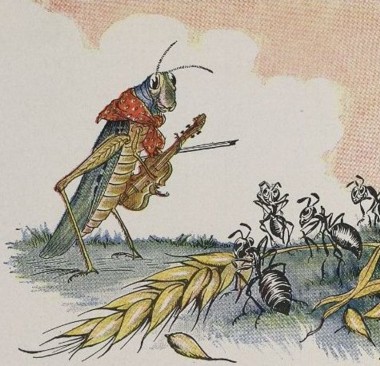For whatever reason, I was thinking of the Matrix just now**, and it hit me: All this talk of STEM (Science, Technology, Engineering and Mathematics) and encouraging programming in schools was an embodiment of the needs of the parents/Government/IT Sector and not really that of the children. In the Matrix, Neo (and other escapees from a manufactured delusion) fight a system that wants them put in a pod, unwittingly contributing to a global economy – as batteries in the film, but you get what I mean – where even the illusion of personal choice is manufactured.
We need coders, lots of coders
Ian Livingstone OBE, life president of Eidos and recent recipient of a well deserved Develop Award for a lifetime achievement in Games, as well as some other guy (!) published the Livingstone-Hope Review eight months ago, which has been covered in great detail
elsewhere.
Progress from this has been ‘slow’ if his recent presentation at the Develop Conference in Brighton in July is anything to go by, despite Michael Gove, UK Education Secretary, recently declaring that Games offer “huge potential for maths and science teaching”
Livingstone-Hope declared:
“Computer science must be part of the school national curriculum. The current curriculum includes ICT, but the authors of the report argue that ICT, with its focus on every day applications such as word processing, does not teach the valuable computer programming knowledge that is vital to high-tech industries such as videogames and visual effects.”
and
“Young people must be given more opportunity to study art and technology together.”
but both of these rely on what my tutor at Leeds, Dan McDade***, used to call a “utopian indicative”: if more children are exposed to ‘proper’ Computer Science in schools there will be a sudden and impressive flood of kids wanting to go into IT careers. It might be right. Might.
…it is not the spoon that bends, it is only yourself
The imposed homogeneity of a National Curriculum has been with us a long time – I decided to leave school teaching as a result of this and other silliness in the late 80s – but, sadly, there is no waking up from this particular rabbit hole. Even in universities, where you might assume because students have elected to be there, institutional pragmatism as well as ‘customer’ expectations dictate a passive sameness in Higher Education; this will only get worse as HE is increasingly commercialised. Students and staff alike are fearful of opportunities to diversify, for a variety of reasons. It’s hard to assess when there isn’t a level playing field. Learners are often ill-equipped to be pro-active in their own education. Everyone longs for the easy life of spoon-feeding, and those that fight it, face poor feedback, more headaches and longer hours.
…I can dodge bullets? …when you’re ready, you won’t have to.
The trick, of course, is to keep the ‘cool’ (if any beyond novelty) of games and, more challengingly, programming because of the huge difference between choosing what (and whether) to play and the stranger task of designing/making/coding games. Part of the problem is the big gap between what children can reasonably program and the polished products that they are used to consuming. The other issue is what I call ‘Workification’; the consistent transforming of something fun and creative into mindless drudgery by well-meaning, possibly desperate educators, trying to make important skills relevant to an apparently disaffected youth.
Tonight, Ian Livingstone is touting the Next Gen initiative, which is the update showing what has happened post Livingstone-Hope, due at the end of October but being raised on NewsNight early next week according to Livingstone:
Ian Livingstone (@ian_livingstone)
07/10/2011 15:41
Newsnight running a feature on Next Gen report on 10 October ahead of the response. Hope Mr Gove watches! http://t.co/rXeIJiYN
There are, apparently lots of positives, but I feel were we in HE have the biggest contribution to make is in supporting teacher continuing professional development (CPD) and training for the new beyond ICT curricula that the Creative Technology agenda will be asking for. That’s where I will be putting my efforts!
P.S.
I’m thinking of writing a book, “Reality is Borken”, in which I expound at length about how amazingly creative technologies have been squandered in Education by being over-hyped, over-used and under-evaluated. Somehow, I don’t think Jane McGonigal is going to be writing the Foreword.
-
* credit to Corrado Morgana, a colleague at my university for inspiring this title. Otherwise, I’d have gone with “Reality is NOT broken”, which doesn’t have the same ring.
-
** This is a classic case of work avoidance, because I started all this with a complety different altdevblog idea!
-
*** Dan, if you’re reading this, I’ve forgiven you now for losing (and subsequently not marking) one of my PGCE essays, costing me the Distinction I was working towards. It taught me a lot, that particular lesson.


